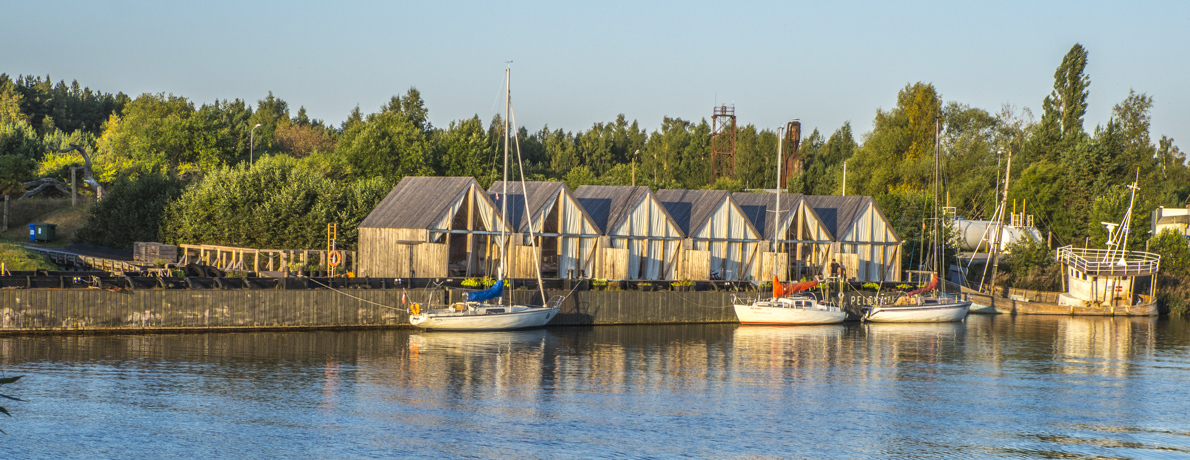
It is said that every road in Pāvilosta in the Kurzeme region of Latvia leads to the beach. This may be true but they pass by some interesting places on the way.
Fringed by Baltic coastline and the Saka River, Pāvilosta offers a closeness to nature it is rare to find. Enriched by beautiful parks and historic buildings reflecting an interesting heritage there is plenty to delight in this small town. But, I did start my visit with an early morning walk along its beautiful beach fringed by grey dunes.
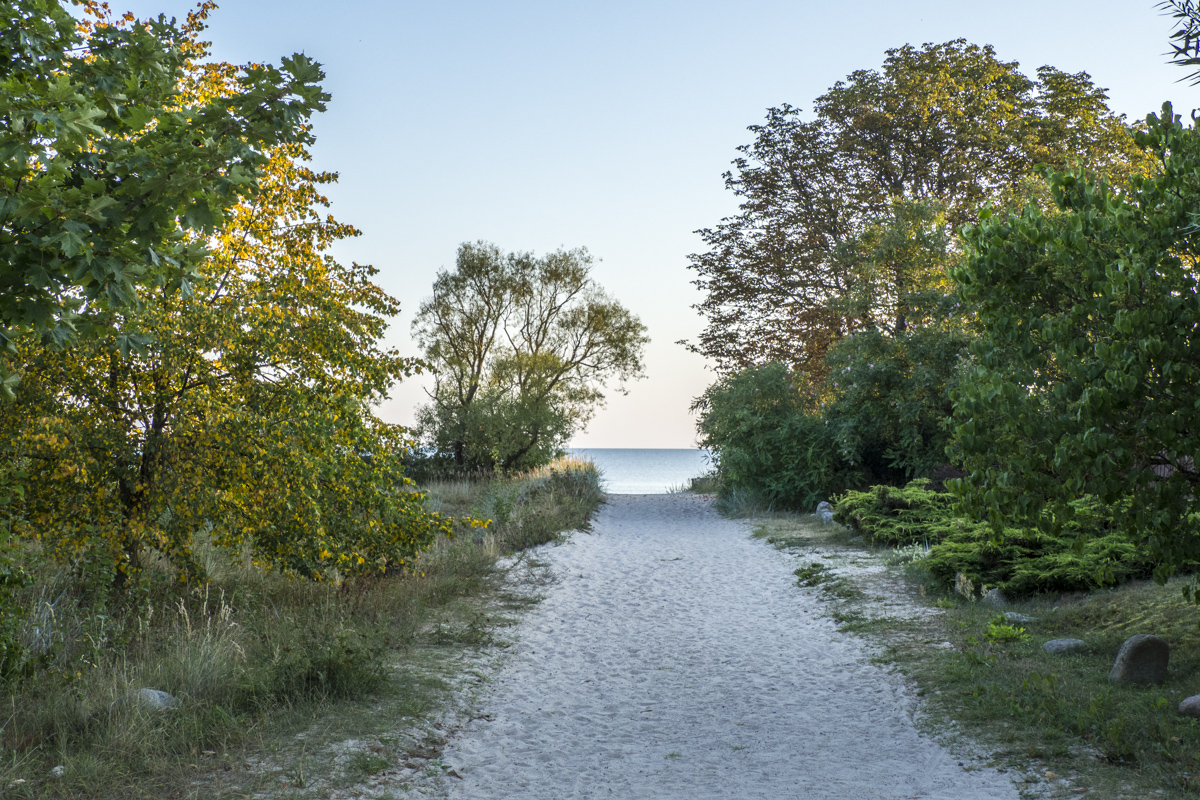
Every Road Leads to the Beach in Pāvilosta in Latvia
The Grey Dunes of Pāvilosta in Latvia
Grey dunes fringe the large, sandy beach of Pāvilosta and the widest of these, at 1.5 kilometres has been designated the Grey Dune of Pāvilosta nature reserve to protect this unique landscape. The creation of this nature reserve, like their restoration of old buildings is another great example of the Latvian passion for their culture and natural landscapes. In Soviet times the local fishermen here would dry seaweed in the dunes to make agar (a food thickener). This accounts for the abundant vegetation growing here. In summer the blooms of Breckland Thyme and Narrowleaf Hawkweed carpet the dunes in yellow and violet. A small group of local enthusiasts campaigned vigorously for the protection of this special area and in 2007 it became a specially protected biotope when the nature reserved was established. Today, visitors can stroll through the dune along the boardwalks or admire it from the specially constructed observation tower.
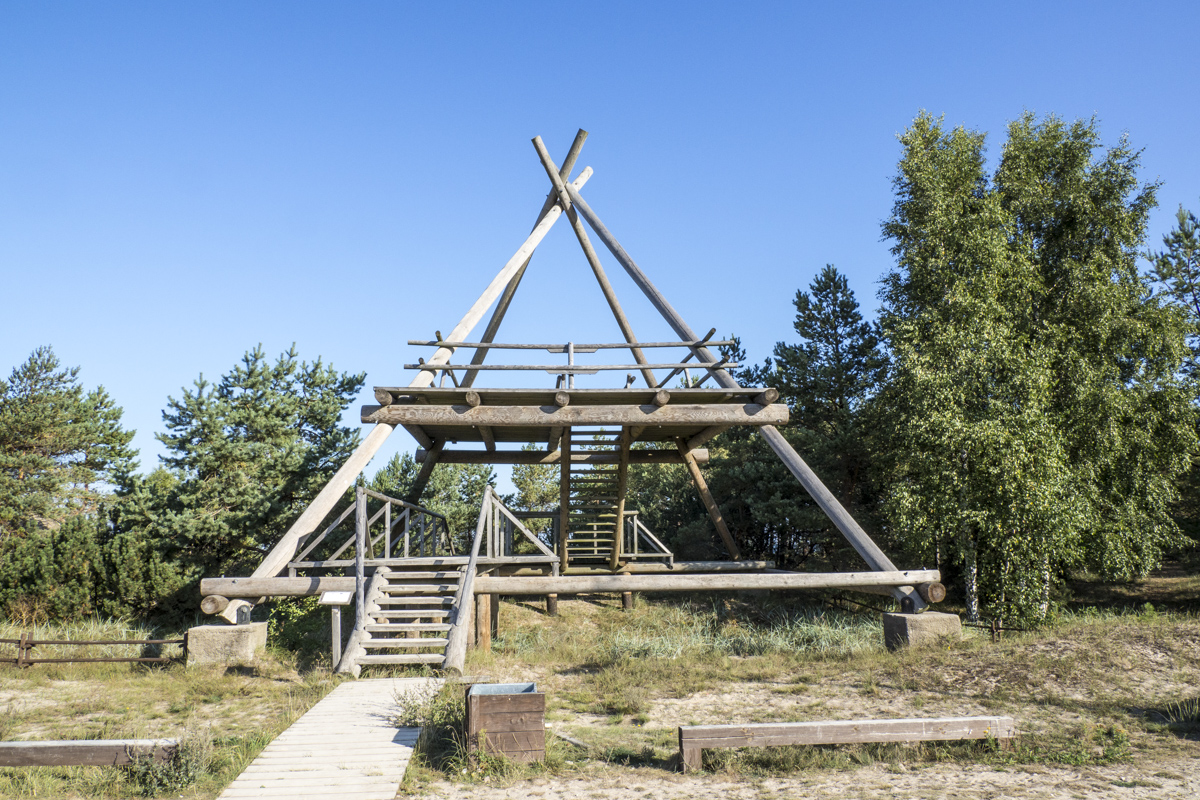
Observation tower in the Grey Dunes Nature Reserve in Pāvilosta in Latvia
The Beach of Pāvilosta in Latvia
Emerging onto the beach from the Grey Dune I was surrounded by golden sand lapped by a blue sea. Standing proud in the sea was a huge boulder. This a landmark of the town – the largest boulder on the Baltic Coast of Kurzeme a region of Latvia.
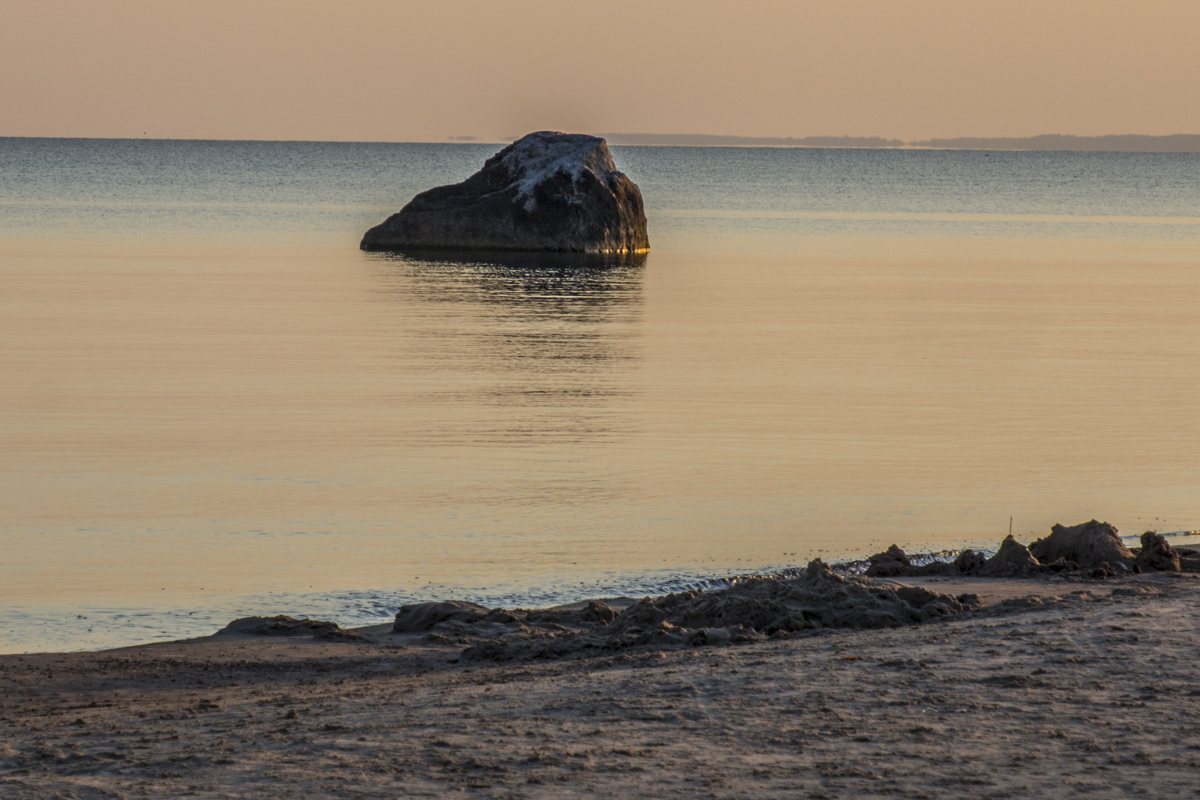
The Largest Boulder on the Baltic Coast of Kurzeme at Pāvilosta in Latvia
Walking along the beach towards the jetties I could see in the distance I spotted something that could have been described as a work of art. In fact, it is a weathered, wooden groyne https://climate-adapt.eea.europa.eu/metadata/adaptation-options/groynes-breakwaters-and-artificial-reefs, or shore protection. Originally a collection of perpendicular wooden posts erosion by the sear has reduced it to a few short posts. Decorated by rocks and the occasional bird they add some interest to an otherwise deserted beach.
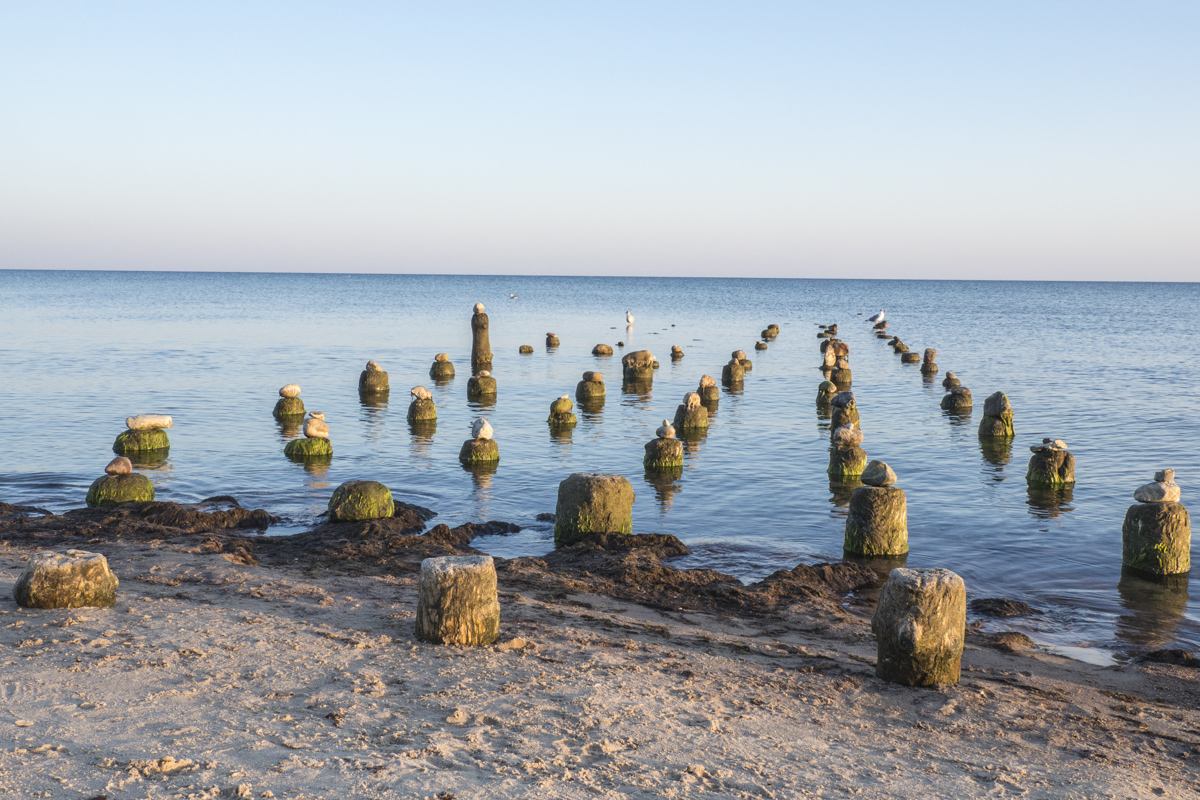
Old Wooden Groyne on the Beach of Pāvilosta in Latvia
The Jetties of Pāvilosta in Latvia
In 1878 the German Baron Otto Friedrich von Lilienfeld built two parallel jetties at the mouth of the Saka River. This local landlord from nearby Upesmuiža manor had recognized the potential of the area and became the founder of the harbour and the town. He named the town after his brother Paul then Governor of Kurzeme – Paulshafen (Paul’s Harbour) or Pāvilosta. Both prospered through the development of ship building and fishing industries. During Soviet times the use of the jetties was severely restricted and they fell into disrepair. In 2010 the jetties were reconstructed and are now safe to use for walks and water sports. The fishing and ship building industries have also seen a revival as the advent of tourism has created new outlets. The remains of Upesmuiža manor have been incorporated into a park, Upesmuiža Park, which is now open to the public.
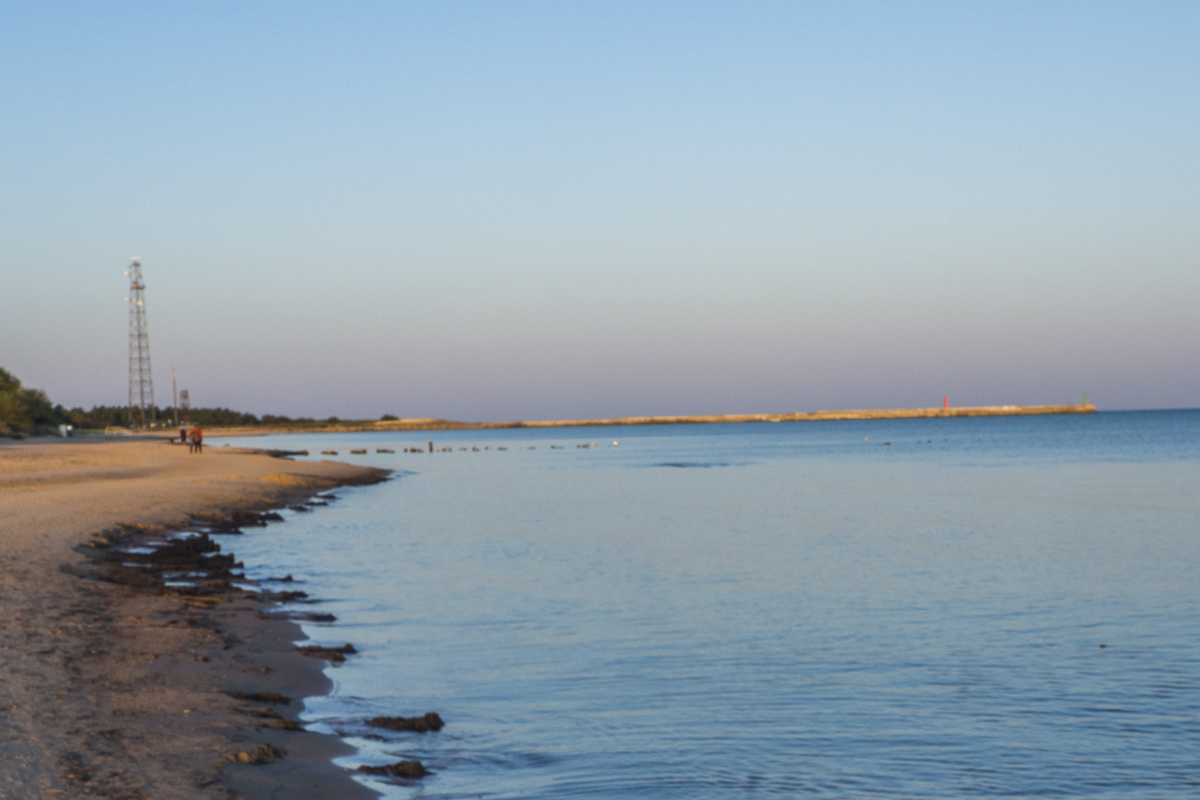
The Beach and Jetties of Pāvilosta in Latvia
The Harbour and Marina of Pāvilosta in Latvia
Pāvilosta port does not freeze in winter and it is the only small Latvian port on the open Baltic sea. It is the closest point to Sweden from Latvia and welcomes approximately three hundred guest yachts in the summer. It has two marinas and a yacht club. The history of the harbour http://www.boatpark.lv/harbour.html in Pāvilosta goes back to the seventeenth century when it was used to export wood, grain and other products to other harbours on the Baltic and North Seas. The main activities of this harbour have been ship building, fishing and commerce. Before the First World War this harbour housed about twenty seaworthy ships and nearly one hundred fishing boats. There were three shipyards then where fishing boats, small cargo ships and two-mast sailing ships were built. The tradition of boat building continues to this day. Facilities include a yachting school, boat rental, windsurfing/kiting school and fishing. Beside the harbour is the town’s museum.
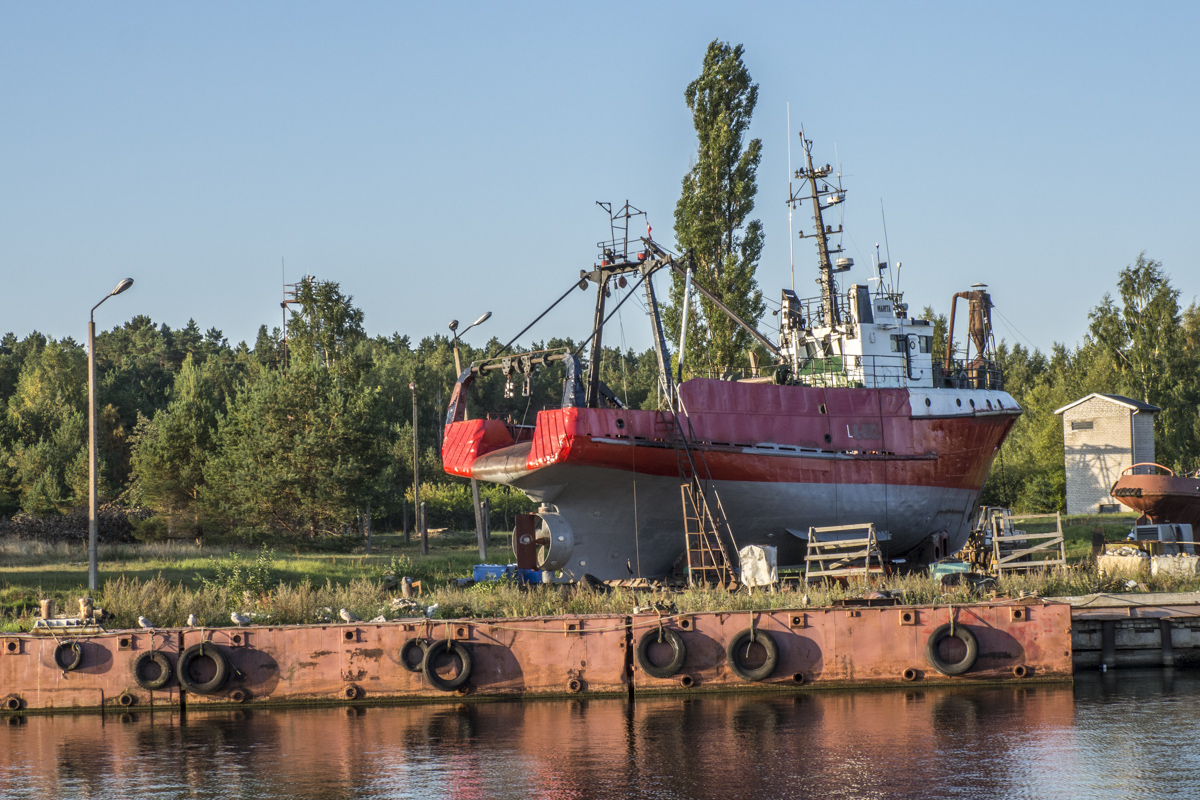
Ship Building in Pāvilosta in Latvia
The Local History Museum in Pāvilosta in Latvia
Pāvilosta Local History Museum is housed in the first pilot’s house, the oldest brick building in the town. Exhibits include the national costume of the Saka municipality in this museum the Pāvilosta Gold Sand Grains is an inter-active exposition of the last hundred years’ history of the town. Also in the museum is the Woven Path. This is the result of a project in 2015 to weave the longest path in the region.
 The Local History Museum in Pāvilosta in Latvia
The Local History Museum in Pāvilosta in Latvia
Behind the museum is the boathouse that once housed a rescue boat. Today it is the Fisherman’s Network House, an exposition of the traditions, tools and techniques of the local fishermen. Strolling along the harbour towards the town centre I passed a line of small fishing boats moored in the estuary of the Saka River – their colourful flags fluttering in the breeze. On display just beyond them is the Vessel Dole.

The Fisherman’s Network House at Pāvilosta in Latvia
The Vessel Dole on Display in Pāvilosta in Latvia
When a fisherman’s collective was formed in 1947 it was given the name Dzintarjura meaning Amber Sea and united the fishermen of Pāvilosta and a neighbouring village, Jurkaine. The had just ten worn out motor boats and twenty-five rowing-sailing boats. In 1949 they acquired the first RB type fishing vessel. RB type fishing vessels, built in East Germany, were the mainstay of the fishing fleet during the fifties and sixties. By the 1970s they had sixteen fishing boats and the Dole was one of them. The Dole was given to the Pāvilosta local history museum in the 1990s. Thanks to the sponsors it was renovated and put on display in memory of the fishermen and their families. The Dole is the only surviving RB vessel and is on display on the edge of the Centennial Park.
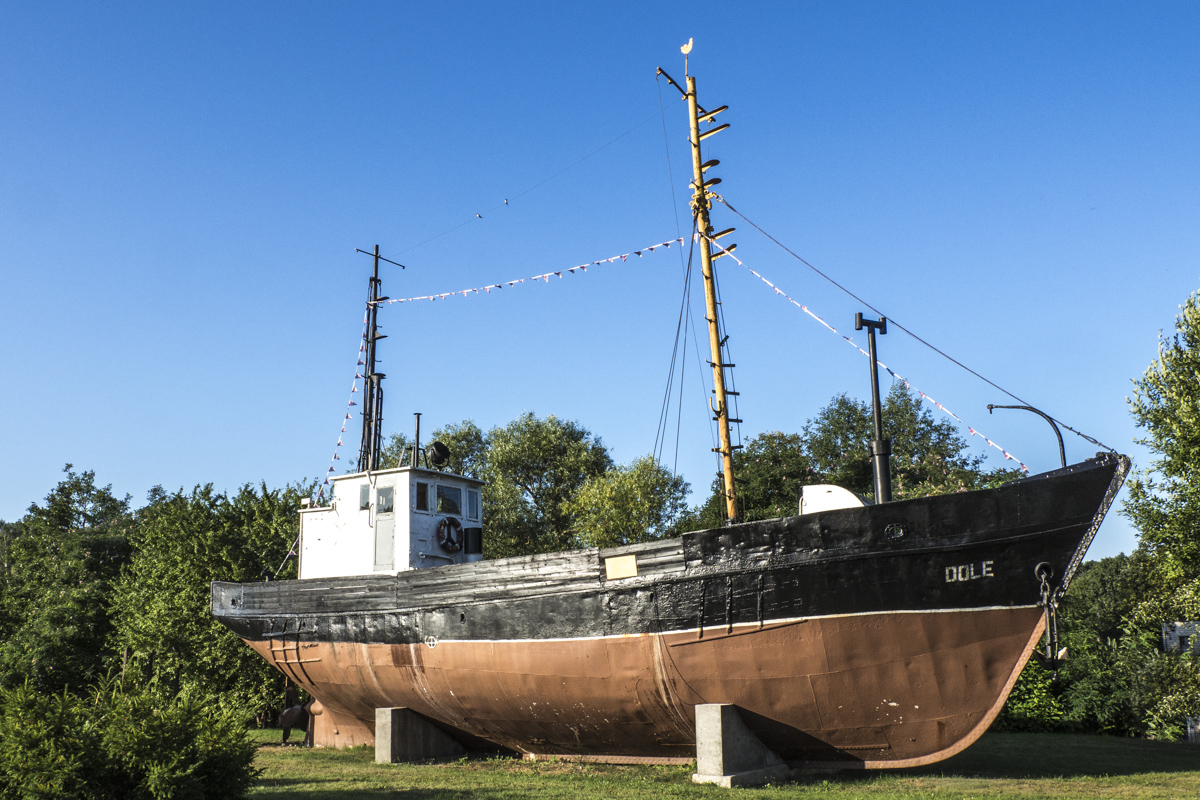
The RB Fishing Vessel Dole on Display in Pāvilosta in Latvia
The Centennial Park in Pāvilosta in Latvia
In 1979 the Centennial Park was created to celebrate one hundred years since the town was founded. This park slopes down to the Saka River whose waters I could see glistening through the trees. An anniversary stone was placed in the centre of the park and plants were placed around paths created by residents and visitors to the town under the guidance of an expert. This expert, Jānis Ausmanis, is represented by the artificial John’s Hill which has a mill stone in its centre. Every plant in the park is special and has its own story. After doing a circuit of the Centennial Park I emerged close to the Tourist Information Centre.
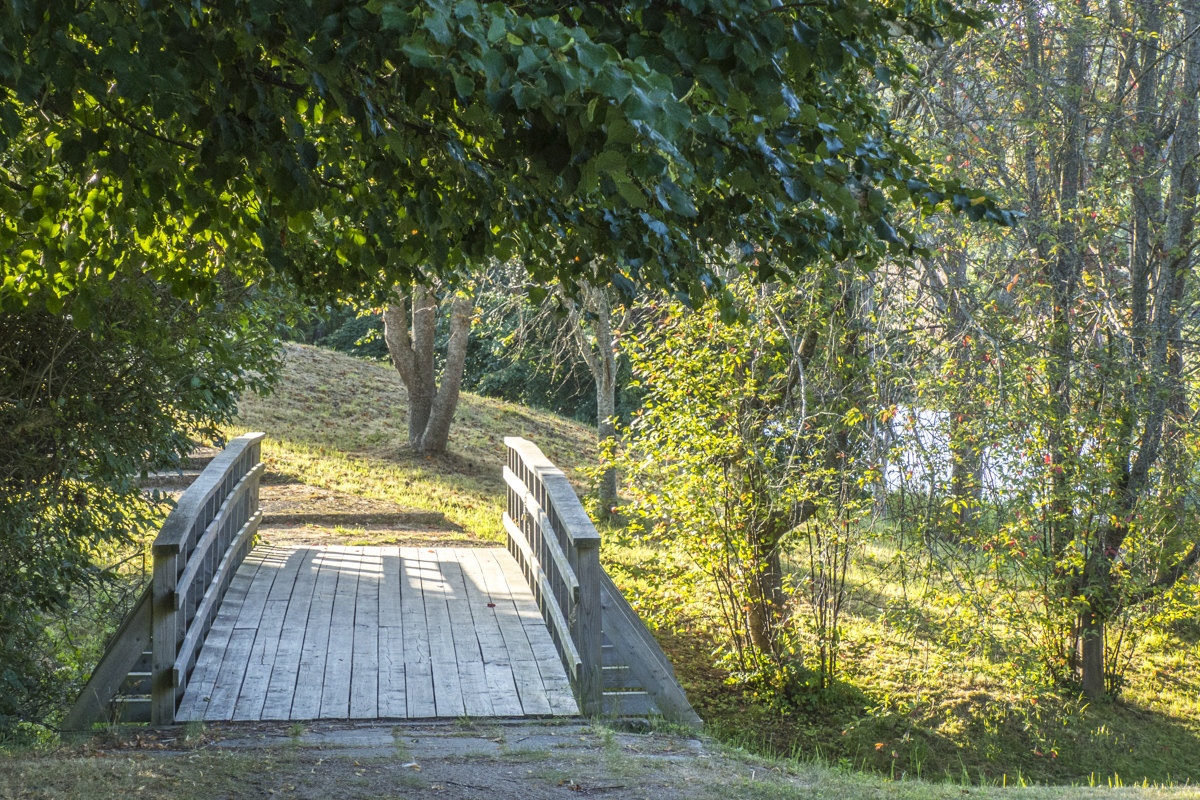
The Centennial Park in Pāvilosta in Latvia
The Semi-Centennial Park Pāvilosta in Latvia
After visiting that I turned back towards the centre of Pāvilosta. Almost immediately I was in another beautiful park. Autumn comes early here and the trees were clothed in hues of yellow and orange. Scattered around the grassy space, dappled by the sun were some wooden benches in the shape of boats. I was in the Semi-Centennial Park created in 1927 to celebrate fifty years since the town was founded. Ernests Šneiders planted the first trees here. He was a teacher at the Pāvilosta elementary school and also a creator of several green spaces in Pāvilosta. The Semi-Centennial celebrations took place two years later. Ernests Šneiders himself has also been commemorated by a park.
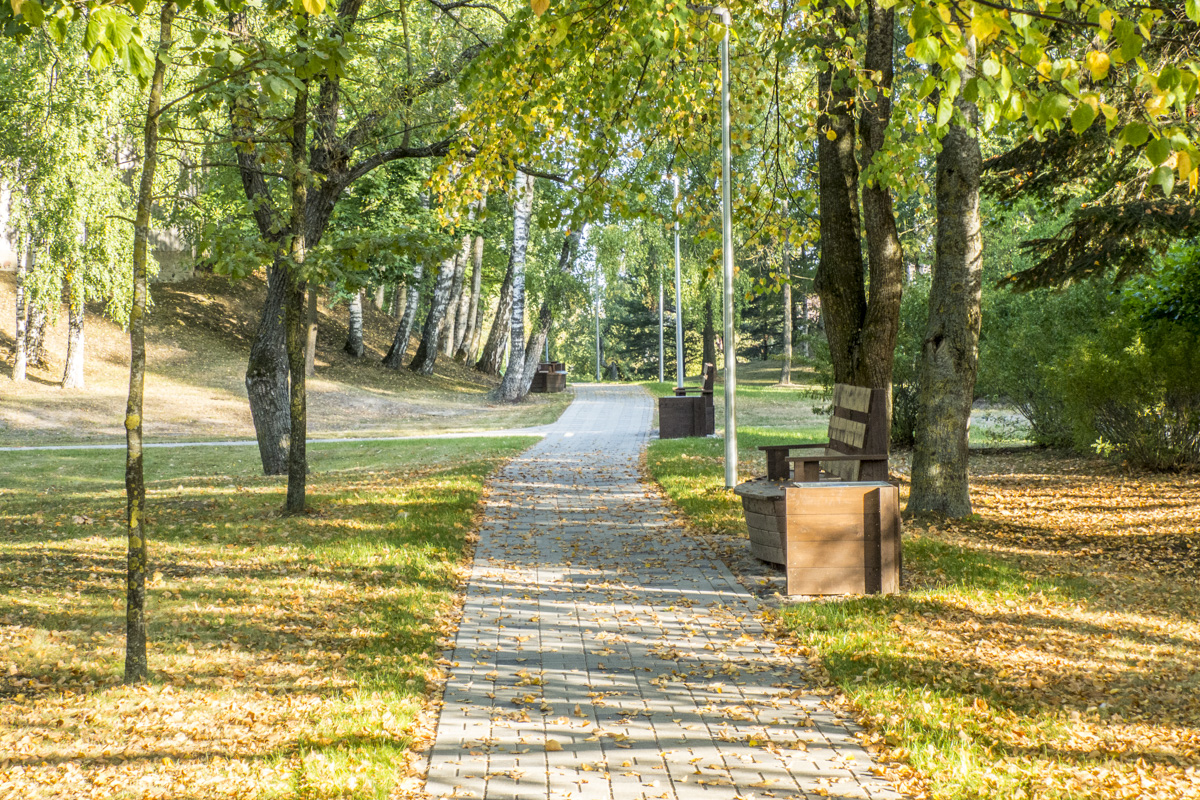
The Semi-Centennial Park Pāvilosta in Latvia
Ernests Šneiders Square in Pāvilosta in Latvia
This square was created to be the market place and that was how it was used until the 1930s. It was renamed Pioneer Square in the 1950s. At the beginning of the 1990s, the square was dedicated to Ernests Šneiders (1892-1948) public figure, teacher, and founder of green spaces in the village. In 1992 the one hundredth anniversary of his birth was celebrated by the placing of a memorial stone in front of the house, number 2, where Šneiders had lived and worked.
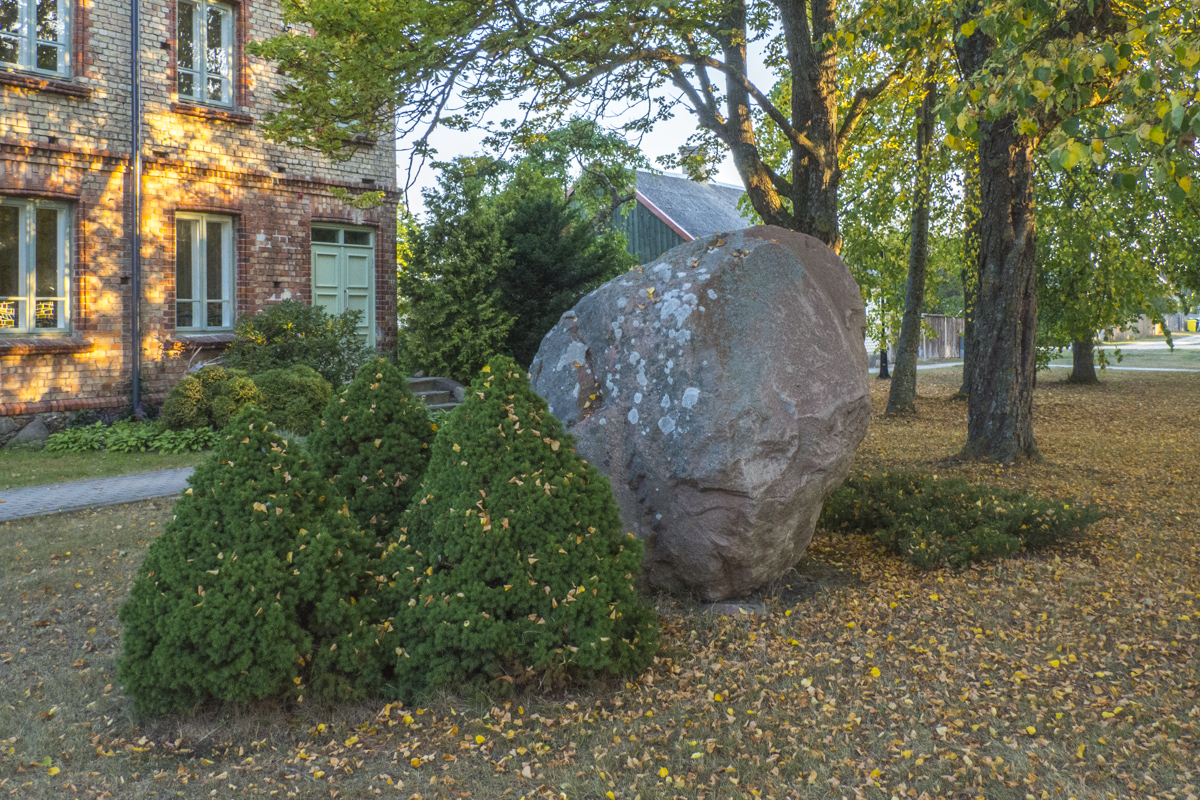
Monument to Ernests Šneiders Outside his House in Pāvilosta in Latvia
This house was originally built as a pharmacy. It was later used as the elementary school of Pāvilosta. Now it hosts the art school of Pāvilosta. It has recently become the centre of an interesting new project. Pāvilosta Artist in Residency or PAiR is an international artist residency founded by the PAiR. The goal is to promote a lifestyle fostering various art forms.
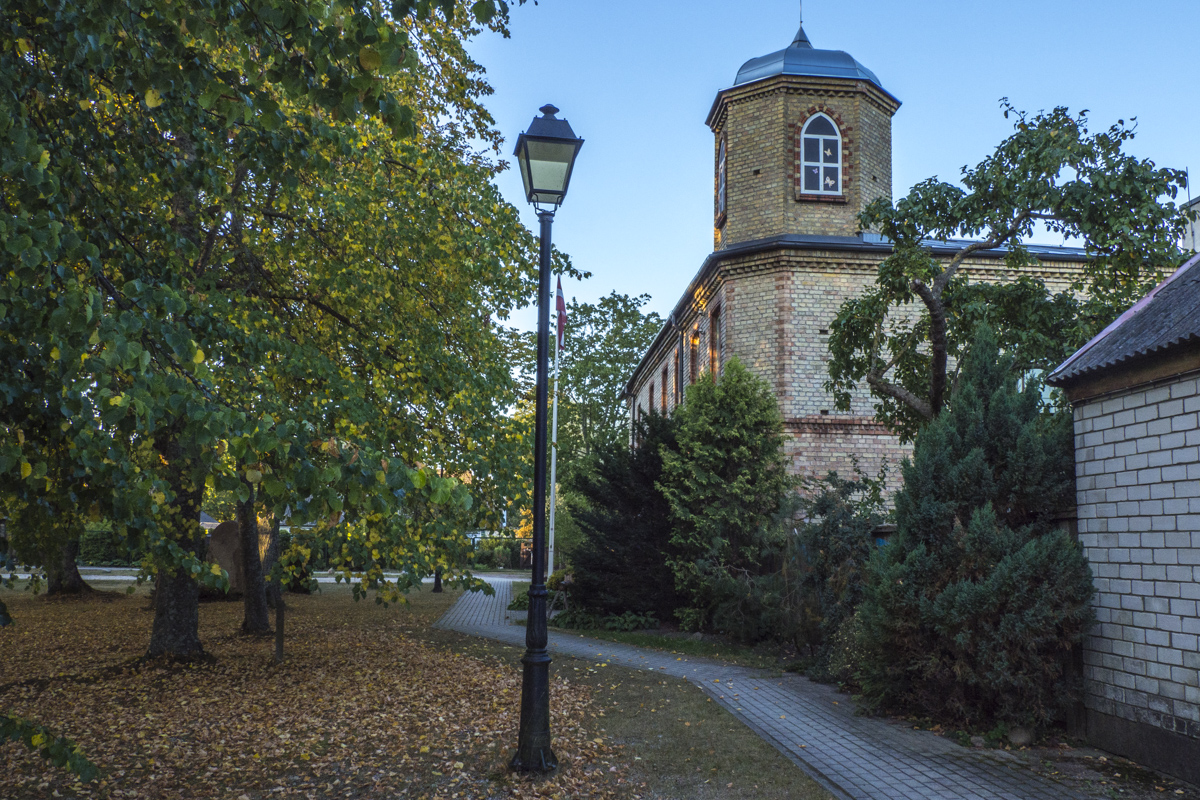
The Art School in in Pāvilosta in Latvia
Also in this square is a lighthouse. It was constructed in 2014 in memory of the fishermen whose final resting- place is the seabed. Since time immemorial the lighthouse has been recognised as a symbol of security, a place of shelter in times of difficulty and a giver of light showing the way to the shore.
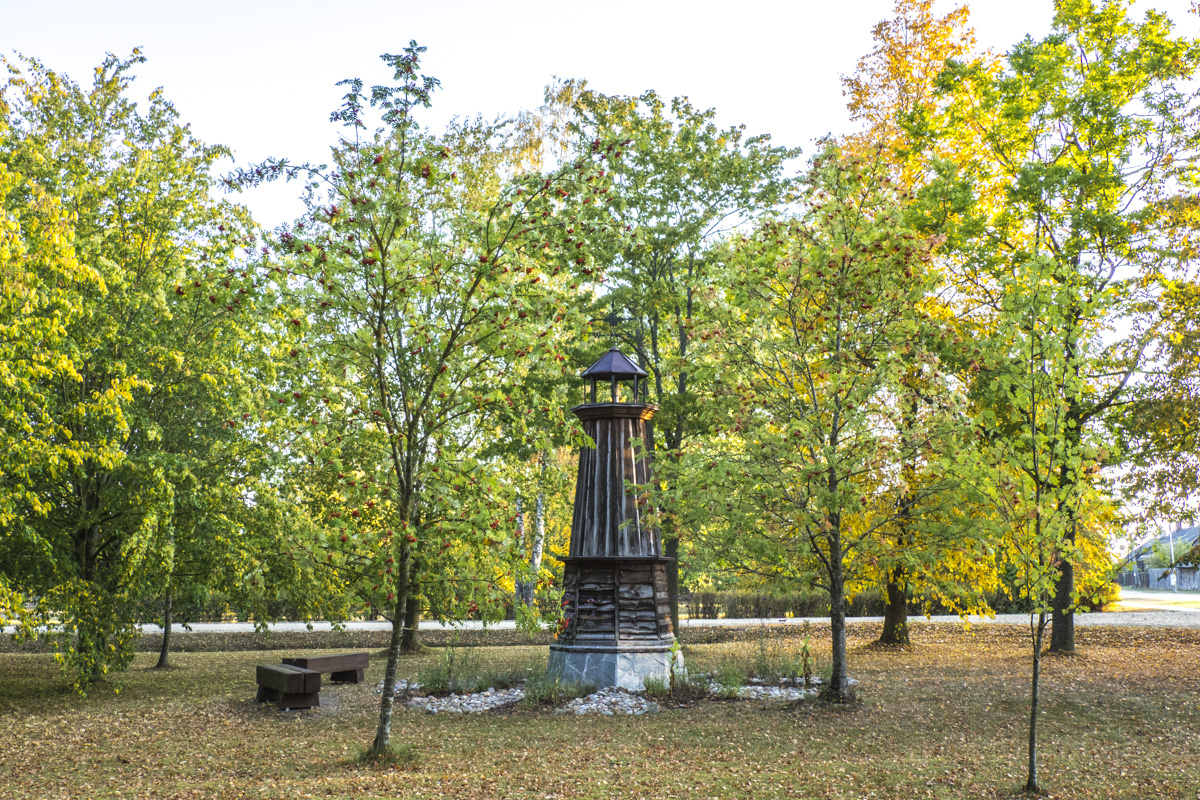
Lighthouse in Ernests Šneiders Square in Pāvilosta in Latvia
Across the road from this park is the wood carving class of the Liepāja Art Secondary School. The oldest fisherman’s houses are located here. Only three such houses have survived until modern times at Pāvilosta. This square has been dedicated to the memory of the fishermen. Completing my circuit of the town I came across two of the three churches in the town.
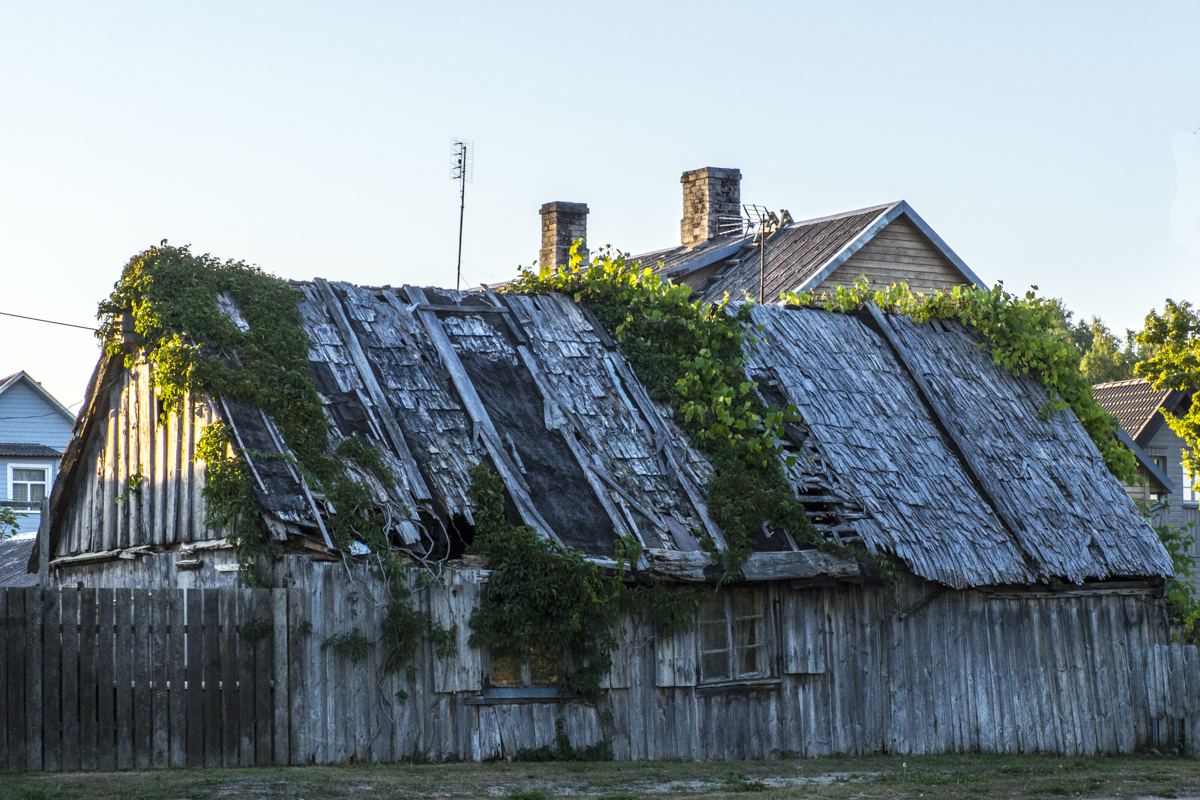
Old Fisherman’s House in Pāvilosta in Latvia
The Churches in Pāvilosta in Latvia
The Baptist Church was the first one to be built in Pāvilosta. Permission to build a church was granted by Baron Otto Friedrich von Lilienfeld in 1897. He also donated a plot of land for the purpose. The first service was held in the church in 1906. By 1930 there were more than four hundred parishioners and fifty Sunday school students living in Pāvilosta and their closest church was seven kilometres away. The Saka Parish council decided to build a church in Pāvilosta. After the Second World War during the 1950s more than one hundred Catholics were moved to Pāvilosta. It was not until 1998 that a Catholic parish was established and it was possible to build a church. The Holy Spirit Roman Catholic Church was built a year later. Prior notice must be given to visit any of these churches.
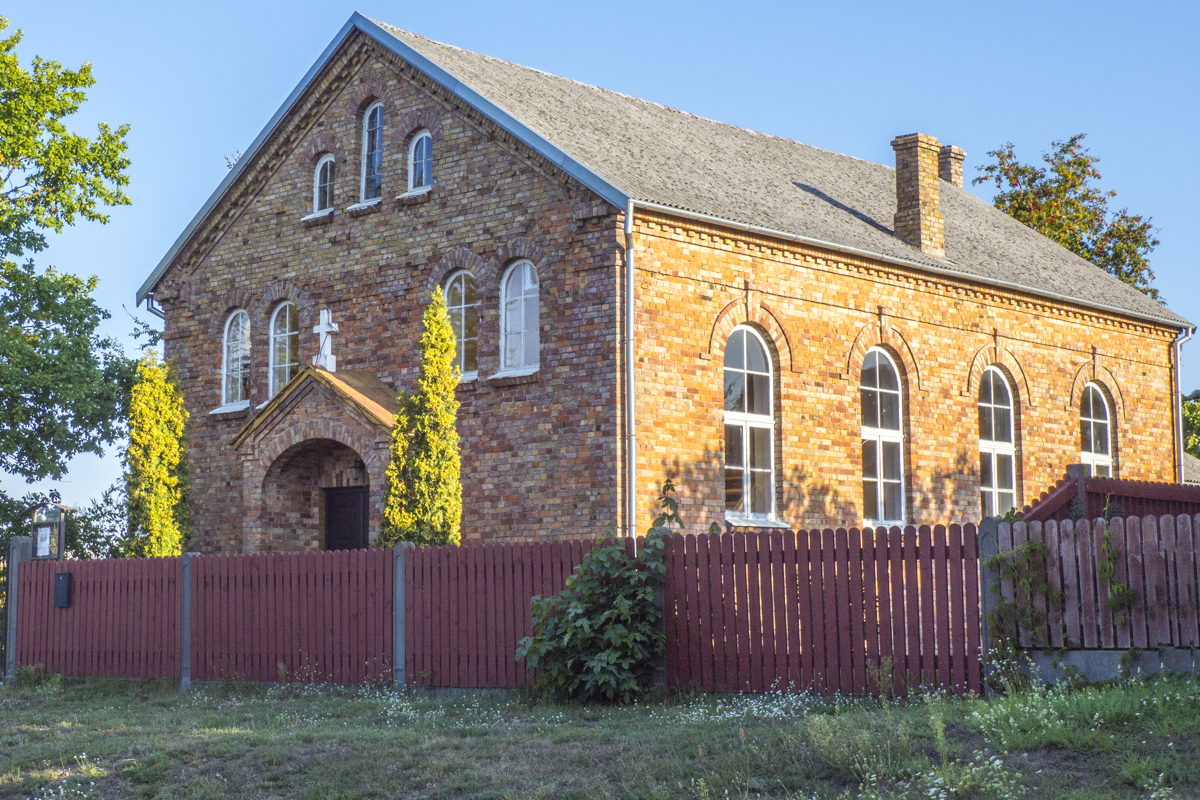
Lutheran Church in Pāvilosta in Latvia
Where to Stay in Pāvilosta in Latvia
I stayed at Vēju paradīze in Pāvilosta. This two-storey hotel stretches along two sides of a grassy courtyard. The rooms are rustic and comfortable. The place has a lovely ambience especially when the glass frontage of the main building is lit up by the late evening sun. The hotel has a restaurant serving a good variety of dishes both conventional and traditional. Meals can be taken outside on the veranda – a very pleasant experience. A short walk from the large, sandy beach this is a lovely place to stay.
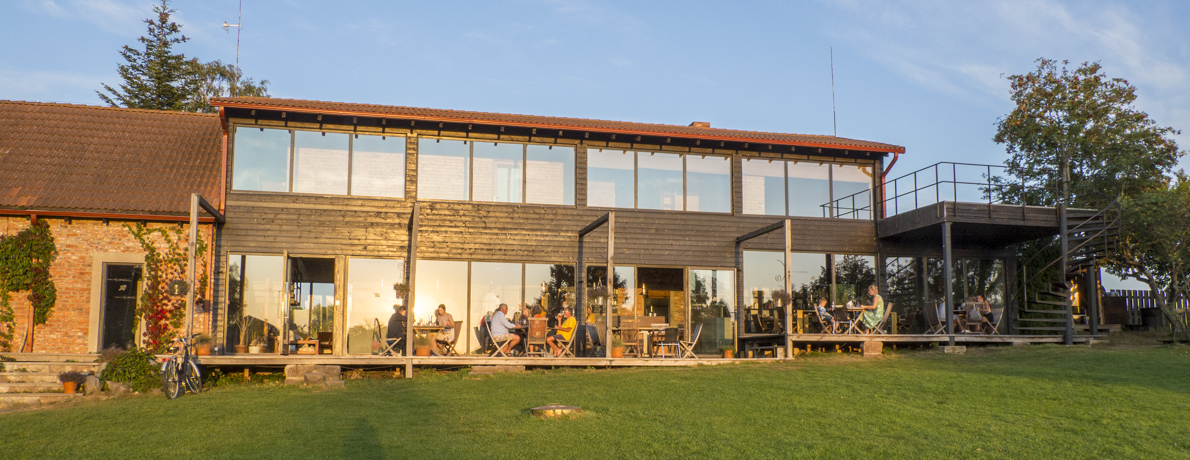
Vēju paradīze in Pāvilosta in Latvia
Getting to Pāvilosta in Latvia
Air Baltic operates direct flights to Riga. There is public transport available and at very reasonable prices but to benefit from the interesting and varied attractions in and around Pāvilosta the best option is to hire a car.
Available on GPSmyCity.com
This article is now featured on GPSmyCity. To download this article for offline reading or travel directions to the attractions highlighted in this article, go to Walking Tours in Pavilosta on GPSmyCity
This article is based on the personal experience of Valery, an ExperiencedTraveller..